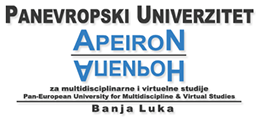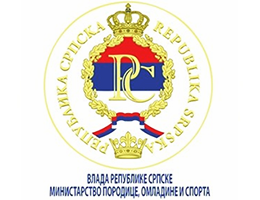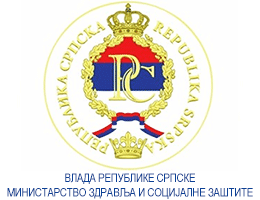Razlike u morfološkim karakteristikama i motoričkim sposobnostima između dječaka i djevojčica od II do V razreda
Volume 15, Issue 1 (2025)
Volume 15, Issue 1 (2025)
Razlike u morfološkim karakteristikama i motoričkim sposobnostima između dječaka i djevojčica od II do V razreda
Apstrakt:
Istraživanje je sprovedeno na uzorku od
ukupno N=1850 učenika od II do V razreda osnovne
škole, a od toga je bilo N=989 (53%) muških ispitanika
i N=861 (47%) ženskih ispitanika. Cilj istraživanja
bio je utvrditi razlike u morfološkim karakteristikama
i motoričkim sposobnostima između dječaka i djevojčica
od II do V razreda osnovne škole. Od statističkih
metoda primijenjeni su deskriptivno statistički metod i
t-test za nezavisne uzorke. Za obradu podataka korišten
je statistički program za personalne računare SPSS za
Windows verzija 22. Analizirajući rezultate morfoloških
karakteristika utvrđeno je da dječaci u odnosu na djevojčice
imaju veći indeks tjelesne mase (BMI) i kožni
nabor na leđima (subscapular). Nisu utvrđene razlike u
kožnom naboru nadlaktice (triceps) i kožnom naboru na
stomaku (suprailiac). Analizirajući rezultate motoričkih
sposobnosti utvrđeno je da su dječaci bolji u: dohvatu u
sijedu (gipkost), ležanje/sijedu (snaga trupa) i izdržaju
u zgibu (funkcionalna snaga), dok su djevojčice bolje u
skoku u dalj iz mjesta (eksplozivna snaga nogu) i snazi
šaka (statička snaga). Svi navedeni testovi su bili statistički
značajni na nivou manjem od 1% (p<0,01), samo
je test izdržaj u zgibu (funkcionalna snaga) bio statistički
značajan na nivou od (p<0,05). U testovima flamingo
(ravnoteža) i trčanje 10x5m tamo-ovamo (brzina trčanja
i agilnost) rezultati su bili u korist djevojčica, a kod testa
taping rukom (brzina pokreta) rezultati su bili u korist
dječaka ali ove razlike nisu bile statistički značajne. Potrebno
je preventivno djelovati na vrijeme i vršiti češća
testiranja i mjerenja učenika osnovnoškolskog uzrasta u
cilju praćenja promjena rasta i razvoja.
Ključne riječi:
morfologija, motorika, eurofit, mlađi školski uzrast, razlike.
Puni tekst:
Reference:
Aaltonen, S., Latvala, A., Rose, R. J., Pulkkinen, L., Kujala, U. M., Kaprio, J., & Silventoinen, K. (2015). Motor Development and Physical Activity:
A Longitudinal Discordant Twin-Pair Study. Medicine and science in sports and exercise, 47(10): 2111–2118. https://doi.org/10.1249/
MSS.0000000000000650
Adolph, K. E., & Hoch, J. E. (2020). The Importance of Motor Skills for Development. Nestle Nutrition Institute workshop series, 95, 136–144. https://
doi.org/10.1159/000511511
Barnett, L. M., Beurden, E., Morgan, P. J., Brooks, L. O., & Beard, J. R. (2008). Childhood Motor Skill Proficiency as a Predictor of Adolescent Physical
Activity. Journal of Adolescent Health, 44 (3), 252 – 259. DOI: 10.1016/j.jadohealth.2008.07.004. PMID: 19237111
Carlos, M., Marinho, D., Casanova, N., Fonseca, T., Vila-Chã, C., Jorge, B., Izquierdo, M., Esteves, D., Marques, M. (2014). Gender’s Effect
on a School-Based Intervention in The Prepubertal Growth Spurt. Journal of Human Kinetics, 12(43): 159-167. https://doi.org/10.2478/
hukin-2014-0101
C., Dapp., L., Gashaj, V., M. & Roebers, C. (2021). Physical activity and motor skills in children: A differentiated approach. Psychology of Sport and
Exercise, 54(2):101916. DOI: 10.1016/j.psychsport.2021.101916
Flanagan, S. D., Dunn-Lewis, C., Hatfield, D. L., Distefano, L. J., Fragala, M. S., Shoap, M., Gotwald, M., Trail, J., Gomez, A. L., Volek, J. S., Cortis,
C., Comstock, B. A., Hooper, D. R., Szivak, T. K., Looney, D. P., DuPont, W. H., McDermott, D. M., Gaudiose, M. C., Kraemer, W. J. (2015).
Developmental differences between boys and girls result in sex-specific physical fitness changes from fourth to fifth grade. Journal of strength
and conditioning research, 29(1): 175–180. https://doi.org/10.1519/JSC.0000000000000623
Halaši, S. (2016). Physical structure and motor status as predictors of the quality of life of younger school-age students. Doctoral thesis. Faculty of
Sports and Physical Education, Novi Sad.
Kraljević, R., Gadžić, A., & Vučković, I. (2013). Differences in the motor abilities of seventh-grade boys and girls. Acta Kinesiologica, 7(2): 62 – 66.
Krsmanović, T., & Radosav, S. (2008). Differences in anthropometric characteristics and motor skills of students aged 9-11 years. Journal of the Anthropological
Society of Serbia, 43: 194-198.
Kuczmarski, R., Kuczmarski, MF., Roche, AF. 2000 CDC Growth Charts: Background for Clinical Application. Top Clin Nutr. 2002; 17(2): 15- 26.
Lončar, L. (2011). Motor skills of children from 7 to 10 years old. Diploma thesis, Zagreb: Faculty of Teacher Education, University of Zagreb.
Malina, R. M., Bouchard, C., & Bar-Or, O. (2004). Growth, Maturation and Physical Activity (2nd ed.). Champaign, IL: Human Kinetics.
Marta, C. C., Marinho, D. A., Barbosa, T. M., Izquierdo, M., & Marques, M. C. (2012). Physical fitness differences between prepubescent boys and
girls. Journal of strength and conditioning research, 26(7): 1756–1766. https://doi.org/10.1519/JSC.0b013e31825bb4aa
Mikić, B. (2000). Psychomotorics. Tuzla: Faculty of Philosophy.
Nićin, Đ., & Stjepić, R. (2008). Sensitive stages of development of anthropometric characteristics of boys aged 7-15. Journal of the Anthropological
Society of Serbia, 43: 532-538.
Nikšić E, Beganović E, Rašidagić F, Mirvić E, & Joksimović M. (2019a). The effects of physical education on changes in basic motor skills of female
students in the fifth grade of elementary school. Pedagogics, psychology, medical-biological problems of physical training and sports;
23(6):296-305. https://doi.org/10.15561/18189172.2019.0604
Nikšić, E., Beganović, E., Joksimović, M., Nasrolahi, S., & Đoković, I. (2019b). The impact of strength and coordination on the success of the performance
of freestyle swimming, European Journal of Physical Education and Sport Science; Vol. 5, 11: 10-22. doi: 10.5281/zenodo.3364090
Nikšić, E., Beganović, E., Rašidagić, F., Mirvić, E., & Joksimović, M. (2019c). The effects of physical education on changes in basic motor skills of
female students in the fifth grade of elementary school. Pedagogics, psychology, medical-biological problems of physical training and sports,
23(6):296-305. doi:10.15561/18189172.2019.0604
Nikšić, E., Beganović, E., & Mekić, A. (2020a). Differences in the nutritional status and body composition of 6th and 7th grade students in Bosnia and
Herzegovina. Journal of Physical Education and Sport; 20(5):2787-2795. doi:10.7752/jpes.2020.s5379
Nikšić E, Beganović E, & Joksimović M. (2020b). The impact of the basketball, volleyball, and handball programs on the situation-motorized capability of
the first classes of the elementary school. Pedagogy of Physical Culture and Sports; 24(2):85-2. https://doi.org/10.15561/26649837.2020.0206
Nikšić, E., Joksimović, M., Beganović, E., & Gardašević, N. (2021). Differences in the degree of nutrition and body composition of boys and girls of
pubertal age. Pedagogy of Physical Culture and Sports; 25(1):4-9. https://doi.org/10.15561/26649837.2021.0106
Pejčić, A. (2001). The differences between boys and girls from the first to the fourth grade in morphological characteristics and motor abilities. In:
Findak, Vladimir (ur) Proceedings of the 10th Summer School of Kinesiology in Croatia, p. 137-142. Zagreb: Croatian Association of Pedagogues
of Physical Culture.
Pistotnik B. (2003). Basics of movement. Movement skills and basic resources for their development in sports practice. University of Ljubljana, Faculty
of Sports. Institute of Sports.
Prskalo, I., Samac, M., & Kvesić, M. (2009). Morphological and motoric features as sexual dimorphism in children from 1st to 3rd grade. U: Neljak,
B. (ur.) Proceedings of the 18th Summer School of Kinesiology in Croatia, Poreč. 23-27 June, str. 226-232. Croatian Kinesiology Association.
Rašidagić, F., Nurković, N., Imamović-Turković, Dž., Hadžibulić–Nurković, H., Nikšić, E. & Kapo, A. (2000). Differences between morphological
characteristics and motoric capabilities of physically active and inactive female students. Pedagogy, psychology, medical-biological problems
of physical training and sports, (24)1: 21–26. https://doi.org./10.15561/18189172.2020.0105
Smajić, M., Marinković, A., Đorđić, V., Čokorilo, N., Gušić, M. & Štajer, V. (2017). Differences in morphological characteristics and motor abilities
of girls and boys of younger school age. Journal of the Anthropological Society of Serbia, 52, 83-93. https://doi.org./10.5937/gads52-14389






